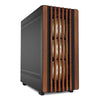Everything You Need to Know About Motherboards: The Complete Guide for Tech Enthusiasts
The motherboard is essentially the " brain " of your computer, where all the other components like processors , graphics cards , and memory are connected. But it's more than just a simple connector: choosing the right motherboard can significantly impact the performance and stability of your system .

We’ll explore different aspects of your motherboard, such as the processor socket , expansion ports , supported memory capacity , and more. We’ll also provide helpful tips for choosing the right motherboard for your needs, whether you’re a gaming enthusiast or a video editing professional .
Introduction to the Motherboard
One of the most important features of your motherboard is the processor socket . The processor socket determines the type of processor you can use on your motherboard. There are different types of sockets, such as Socket AM4 for AMD processors and Socket LGA 1200 for Intel processors. It is essential to make sure that the processor socket is compatible with the processor you intend to use.
In addition to the processor socket, the motherboard also has other connection ports, such as USB ports, SATA ports for storage devices, and PCIe ports for expansion cards such as graphics cards . It is important to ensure that the motherboard has enough ports and connections to meet your needs.
The main components of a motherboard
- Processor Socket : As mentioned above, the processor socket is the connection point for the processor. It is important to choose a motherboard with a socket that is compatible with the processor you intend to use.
- Memory Slots : Your motherboard has one or more memory slots to install RAM modules. The maximum memory capacity supported by your motherboard will depend on the specific model.
- Expansion Slots : Your motherboard also has one or more expansion slots, such as PCIe slots, that allow you to connect expansion cards such as graphics cards, sound cards, or network cards. It is important to make sure that your motherboard has enough expansion slots to meet your needs.
These are just some of the major components of a motherboard, but there are many other components such as chipsets, power connectors, and connectivity ports that play important roles in the functioning of the system.

Motherboard Socket Types
- Socket AM4 : This is the socket used by AMD Ryzen processors. It is a very popular socket among gaming enthusiasts and video editing professionals.
- LGA 1200 Socket : This is the socket used by 10th Gen Intel Core processors. It is a high-performance socket that supports overclocking and other advanced features.
- Socket TR4 : This is the socket used by AMD Threadripper processors. It is a high-end socket designed for extreme performance and intensive multitasking.
These are just a few examples of socket types, but there are many other types available depending on the manufacturer and model of the processor. It is important to make sure that you choose a motherboard with a socket that is compatible with the processor you intend to use.
Motherboard Form Factors
There are several types of form factors, but the most common are:
- ATX : This is the most common form factor and offers a good amount of space for installing additional components. It is suitable for most standard computer cases.
- Micro-ATX : This is a smaller form factor than ATX and offers fewer expansion slots. It is suitable for more compact computer cases.
- Mini-ITX : This is the smallest and most compact form factor. It is suitable for ultra-compact computer cases or systems where space is limited.
It is important to ensure that the motherboard form factor is compatible with the computer case in which you intend to install it. It is also important to consider the amount of space available for additional components, such as graphics cards or expansion cards.

Features and Specifications to Consider When Choosing a Motherboard
- Connection Ports : Make sure your motherboard has enough USB ports, SATA ports, and PCIe ports to meet your needs. If you plan to connect a lot of devices, such as external hard drives or expansion cards, it's important to have enough ports available.
- Memory capacity : Your motherboard has a maximum supported memory capacity . Make sure that the memory capacity is sufficient for your needs. For example, if you plan to use your computer for video editing or gaming, you may need more memory capacity.
- Overclocking Support : If you want to overclock your processor or memory, it is important to choose a motherboard with overclocking support. Not all motherboards offer this feature, so be sure to check the specifications before purchasing.
These are just some of the features and specifications to consider when choosing a motherboard. It is important to evaluate your needs and find a motherboard that offers the features you need for your system.
How to Install a Motherboard in Your PC
- Preparation : Turn off your computer and unplug the power cord. Remove the side panel of the case to access the inside of the PC. Make sure you have all the necessary tools, such as a screwdriver.
- Removing the old motherboard : If you are replacing an old motherboard, disconnect all cables and connectors from the motherboard and remove the retaining screws. Gently remove the old motherboard from the case.
- Case Preparation : Make sure your case has the correct standoffs for your new motherboard model. Standoffs are metal supports that lift the motherboard out of the case, preventing short circuits. Install standoffs into your case, if necessary.
- Installing the new motherboard : Carefully place the new motherboard over the standoffs in the case. Make sure the motherboard's rear panel connector lines up properly with the case's rear panel. Secure the motherboard to the case using the retaining screws.
- Connecting Cables : Connect cables and connectors from the motherboard to system components, such as power, SATA cables for storage devices, and connection ports for external devices. Make sure you connect everything correctly according to your motherboard manual.
- Final check : Once all the cables are connected, double check that everything is connected properly. Make sure there are no overlapping cables or bent pins. Close the case and reconnect the power cable.
These are just the basic steps for installing a motherboard. It is important to follow the motherboard manufacturer's instructions carefully and refer to your computer case manual for more details.

How to update motherboard BIOS
Here's how to update your motherboard BIOS:
- Check BIOS Version : Start your computer and enter the BIOS by pressing the appropriate key during startup (usually DEL or F2). Check the current BIOS version.
- Downloading a BIOS update : Visit your motherboard manufacturer's website and search for BIOS updates for your motherboard model. Download the latest BIOS update to your computer.
- Preparing for the update : Make sure you have a backup of your current BIOS in case you run into problems during the update. Also make sure you have a reliable power source during the update, such as a UPS.
- BIOS Update : Start the BIOS update program and carefully follow the on-screen instructions. Your computer may restart several times during the update. Never interrupt the update process or turn off your computer during the update.
- Verify the update : Once the update is complete, restart your computer and enter the BIOS again to verify that the BIOS version has indeed been updated.
It is important to remember that updating the BIOS can carry some risks . If you are unsure how to perform a BIOS update correctly, it is advisable to seek assistance from a technical expert or the motherboard manufacturer's support.

Common Motherboard Problems and How to Fix Them
- Computer won't turn on : If your computer won't turn on at all, there may be a problem with the power supply or cable connections. Make sure the power cord is plugged in properly and try plugging your computer into a different power outlet.
- System Instability : If your computer freezes or restarts unexpectedly, there may be a memory or driver compatibility issue. Verify that your memory is compatible with your motherboard and make sure you have the latest drivers installed on your system.
- No Video Signal : If your computer turns on but you have no video signal on the monitor, there may be a problem with the graphics card or the cable connections. Make sure the graphics card is properly connected to the motherboard and that the monitor is properly connected to the graphics card.
- Boot Problems : If your computer boots but fails to load the operating system, there may be a problem with the hard drive or the operating system itself. Verify that the hard drive is properly connected to the motherboard and try performing a recovery or reinstallation of the operating system.
- Sound Problems : If you have no sound on your computer, there may be a problem with your sound driver or system settings. Make sure your sound drivers are installed properly and try checking your system sound settings.
These are just some of the common motherboard related problems. If you encounter problems that you cannot solve on your own, it is advisable to contact a professional technician or the motherboard manufacturer support.

The best motherboard brands on the market
- ASUS : ASUS is one of the most popular brands in the world of motherboards, known for its quality and reliability. It offers a wide range of models to suit different needs and budgets.
- Gigabyte : Gigabyte is another renowned brand in the motherboard industry, with a solid reputation for the quality of its products. It offers a wide range of high-performance models for gaming enthusiasts and professionals.
- MSI : MSI is a brand known for its high-quality and high-performance motherboards. It offers a full range of models for different uses, from gaming to professional work.
- ASRock : ASRock is an emerging brand in the motherboard industry, known for its combination of quality and affordable price. It offers a wide range of models to suit different needs.
These are just some of the top motherboard brands on the market, but there are many other reliable brands to consider such as Biostar , EVGA , and many more. It is important to do thorough research on the different models and read user reviews before making a decision.
Remember to carefully consider the processor socket , form factor , features , and motherboard specifications before making a purchase. Evaluate your needs and budget to find the motherboard that offers the best value for your money.
If you have any problems or questions while installing or using your motherboard, feel free to seek expert assistance or contact your motherboard manufacturer's support . With the right motherboard and proper installation, you can enjoy a powerful and stable system for all your computing needs.























